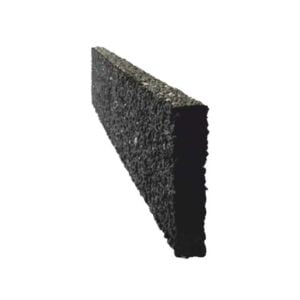Before diving into fitting land drainage, it’s crucial to understand the basics and the specifics of how to connect the drains properly, as well as the best applications for different types of pipes. Without a solid understanding of these fundamentals, it can be challenging to grasp more complex concepts.
What actually is land drainage?
Land drainage is typically used to relieve excess water sitting above ground. It's often referred to as a 'French drain' and is identifiable by its flexible black pipe with a corrugated outer layer. These pipes come in perforated and unperforated varieties, each suited to specific tasks. At EasyMerchant, we offer sizes ranging from 60mm to 110mm in both perforated and unperforated options.
How do the land drain pipes actually drain land?
Perforated land drainage pipes are designed to absorb water from the ground. The tiny holes along the pipe allow water to flow in from the surrounding soil, which can then be redistributed into the soil or directed towards an underground drainage system. This helps prevent long-term surface water accumulation. These pipes are fully perforated, ensuring water can enter from all sides, which is beneficial for field drainage.
Unperforated land drainage pipes, on the other hand, are used to distribute surface water. If you need to redirect water into a river or a soakaway system, these pipes are your best bet. Just remember to use them exclusively for surface water and not foul water, as the latter violates regulations.
In what situations should you use land drain?
Land drainage is essential in various scenarios, including construction, landscaping, and agriculture. For instance, in agricultural projects like field drainage, perforated pipes are highly effective in improving soil quality. Similarly, these underground drainage systems are used in sports facilities and residential areas.
In urban settings, avoiding standing water is critical to prevent structural issues caused by increased static loads on underground structures. Therefore, land drainage is vital in urban environments to avoid future complications related to water accumulation.
How to identify a land drainage pipe?
Most land drainage pipes used in projects are black. Be careful not to confuse them with black electrical ducting, which is black to indicate its contents. Land drainage pipes are generally black as standard, but they serve entirely different purposes.
Is there a certain way to go about laying the land drainage pipe?
Preparing to lay the land drain:
When planning domestic land drainage, ensure every point within the area is within 2.5 meters of the land drain. People often opt for the herringbone layout, where a main pipe acts as the central spine branching out with Y connections to each section of land drain. This maximizes coverage and provides the best drainage solution.
For larger areas, the 2.5-meter rule may not be optimal. Also, ensure there’s only a slight fall before installing the drainage system, typically around 1 in 150, but never exceeding 1 in 100.
The actual installation process:
Start any pipework job by working backward to make the task easier. The trench should accommodate approximately 150mm of granular material on each side of the pipe during installation.
The trench depth should allow for at least 100mm of bedding at the bottom. It should also permit 150mm of shingle to cover the pipe, followed by 300mm of free-draining material. Finally, the trench will be filled with 100mm of previously excavated soil and can be covered by laying turf.
The trench depth depends on the pipe size. For a common 100mm pipe, the trench would be around 750mm deep. Always consider the additional layers with your pipe size to determine the appropriate trench depth.
Is the use of geotextile membrane essential when installing a land drainage system?
While not absolutely necessary, using a non-woven geotextile membrane is advisable for long-term system reliability. It prevents silt and dirt from entering the pipework while allowing water to pass through, thus extending the system's lifespan. If suitable for your project, apply the permeable geotextile membrane below the 100mm top layer of excavated soil but above the free-draining layer.
Ring us if you are unsure!
Installing land drainage involves many considerations, and it can sometimes get confusing. If anything in this article is unclear, don’t hesitate to reach out to a drainage engineer or contact us for assistance. We’ll do our best to address any questions you might have!
Shop Land Drainage:

Enviroflow Drainage Plank
Heavy Duty Common Caster,Common Caster,Heavy Duty Caster,Caster With Wear Resisting
BENYU CASTERS & WHEELS CO.,LTD , https://www.benyucaster.com